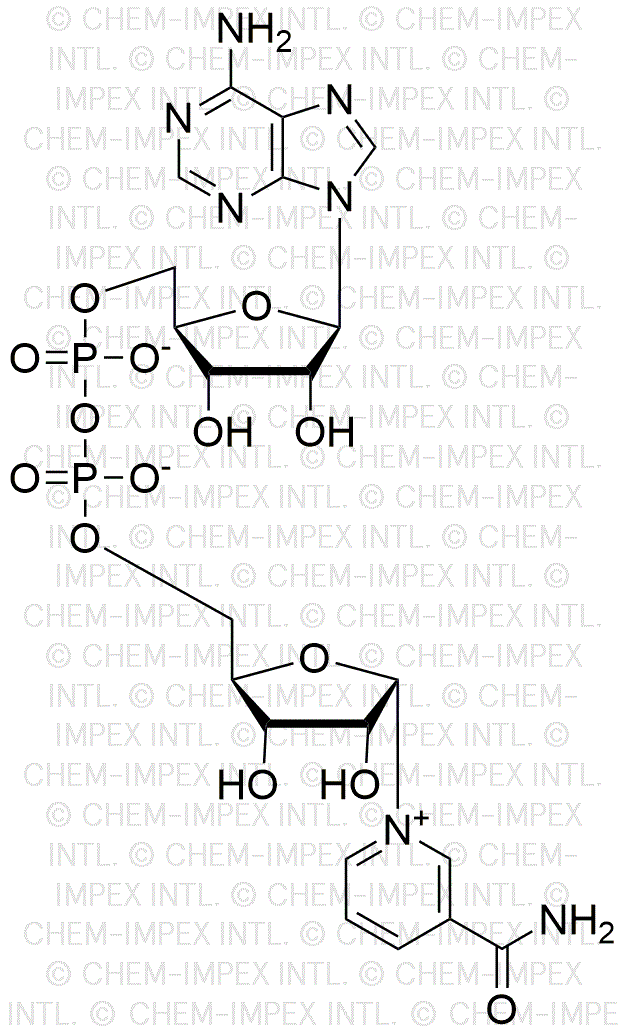a-Nicotinamide adenine dinucleotide, reduced disodium salt is widely utilized in research focused on:
- Biochemical Research: This compound plays a crucial role in cellular metabolism and energy production, making it essential for studies on metabolic pathways and enzyme activity.
- Pharmaceutical Development: It is often used in drug formulation and testing, particularly for medications targeting metabolic disorders, due to its role in redox reactions.
- Cell Culture Applications: Researchers use it to enhance cell growth and viability in culture systems, which is vital for developing new therapies and understanding cellular processes.
- Neuroscience Studies: The compound is important in neurobiology for investigating neuronal health and signaling, helping to explore treatments for neurodegenerative diseases.
- Antioxidant Research: Its properties as an antioxidant make it valuable in studies aimed at understanding oxidative stress and its implications in aging and chronic diseases.
General Information
Properties
Safety and Regulations
Applications
a-Nicotinamide adenine dinucleotide, reduced disodium salt is widely utilized in research focused on:
- Biochemical Research: This compound plays a crucial role in cellular metabolism and energy production, making it essential for studies on metabolic pathways and enzyme activity.
- Pharmaceutical Development: It is often used in drug formulation and testing, particularly for medications targeting metabolic disorders, due to its role in redox reactions.
- Cell Culture Applications: Researchers use it to enhance cell growth and viability in culture systems, which is vital for developing new therapies and understanding cellular processes.
- Neuroscience Studies: The compound is important in neurobiology for investigating neuronal health and signaling, helping to explore treatments for neurodegenerative diseases.
- Antioxidant Research: Its properties as an antioxidant make it valuable in studies aimed at understanding oxidative stress and its implications in aging and chronic diseases.
Documents
Safety Data Sheets (SDS)
The SDS provides comprehensive safety information on handling, storage, and disposal of the product.
Product Specification (PS)
The PS provides a comprehensive breakdown of the product’s properties, including chemical composition, physical state, purity, and storage requirements. It also details acceptable quality ranges and the product's intended applications.
Certificates of Analysis (COA)
Search for Certificates of Analysis (COA) by entering the products Lot Number. Lot and Batch Numbers can be found on a product’s label following the words ‘Lot’ or ‘Batch’.
*Catalog Number
*Lot Number
Certificates Of Origin (COO)
This COO confirms the country where the product was manufactured, and also details the materials and components used in it and whether it is derived from natural, synthetic, or other specific sources. This certificate may be required for customs, trade, and regulatory compliance.
*Catalog Number
*Lot Number
Safety Data Sheets (SDS)
The SDS provides comprehensive safety information on handling, storage, and disposal of the product.
DownloadProduct Specification (PS)
The PS provides a comprehensive breakdown of the product’s properties, including chemical composition, physical state, purity, and storage requirements. It also details acceptable quality ranges and the product's intended applications.
DownloadCertificates of Analysis (COA)
Search for Certificates of Analysis (COA) by entering the products Lot Number. Lot and Batch Numbers can be found on a product’s label following the words ‘Lot’ or ‘Batch’.
*Catalog Number
*Lot Number
Certificates Of Origin (COO)
This COO confirms the country where the product was manufactured, and also details the materials and components used in it and whether it is derived from natural, synthetic, or other specific sources. This certificate may be required for customs, trade, and regulatory compliance.


